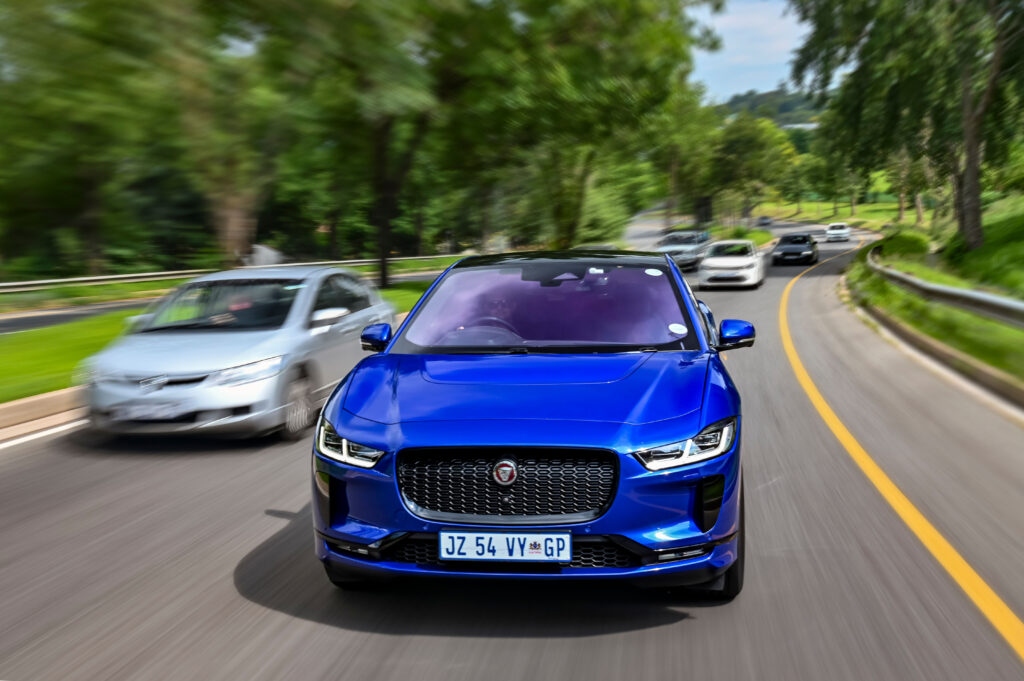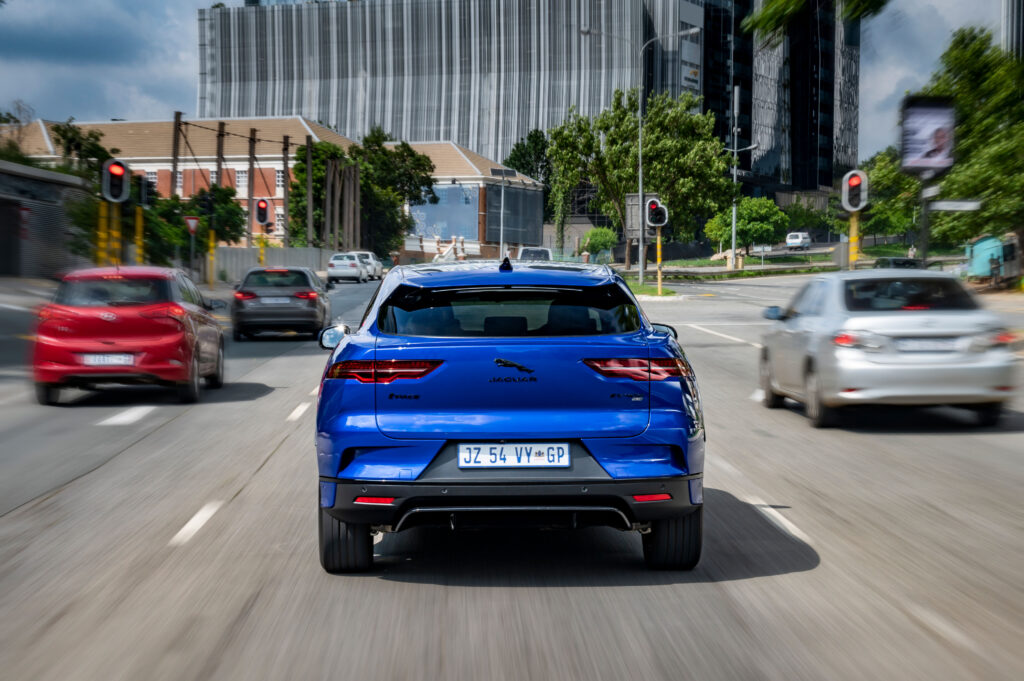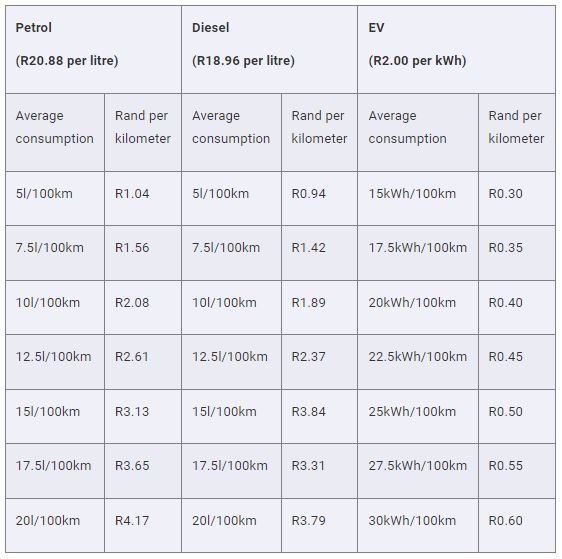South Africa is certainly behind the curve of electric vehicle (EV) adoption and while there is no denying internal combustion engine (ICE) cars provide a more engaging and exciting drive, at some point in time, you will find yourself weighing up the pros and cons of EV vs ICE.
Jaguar South Africa recently sent one of their senior driving instructors on a week-long test to see just how much cheaper an EV is to run per kilometre.
They used the impressive Jaguar I-PACE in a variety of real-world driving environments to record and report the electricity consumption and cost per km (R/km).
“We knew going into this test that ICE cars simply cannot compete with EVs on energy costs and rands per kilometre,” said Andrew Blane, Senior Instructor, Jaguar Land Rover Experience Johannesburg. “The objective here was to work out the costs of driving an I-PACE in the real-world with results as close as possible to what actual customers would achieve. No pre-determined routes to benefit one power source over another. No laboratory test cycles. No nonsense.”
Cost to fill
Of course, the cost to ‘fill’ an EV battery and ICE tank is irrelevant to the R/km comparison, it is worth knowing that the EV is much cheaper to fill up. Charging at home would equate to around R200 less than filling up an SUV of similar size with fuel.
Real-world driving
In heavy traffic, ICE vehicles suffer from slow-moving start-stop commutes while EVS hold an advantage.
“During my week with the I-PACE, I deliberately spent my morning and evening commutes in as much traffic as possible. The car’s trip computer registered an average of 22kWh/100km in heavy congestion, which, given my home electricity rates equates to around 44 cents per kilometre,” said Andrew.
“I had originally expected better results given the I-PACE uses virtually no energy when it’s not moving, but at such low speeds, it’s not able to recuperate much energy through regenerative braking. EVs actually use momentum to put some charge back into their batteries, but in slow-moving traffic there’s not enough kinetic energy to capitalise on.”
Open-road driving is where ICE vehicles have a slight advantage as they are at their most efficient cruising with low revs. EVs are less effective at steady speeds on the open road but the I-PACE still managed some decent R/km figures in Andrew’s test.
“On the highway at 120 km/h the I-PACE performed least efficiently. Prolonged periods on the throttle without regenerative braking resulted in an average electricity consumption of 24kWh per 100km. Even so, that figure equates to a cost per kilometre of only 48 cents. “
EVs thrive in your typical urban environments with a balance of relatively high speeds and frequent braking.
“The I-PACE performed best in what I consider average journeys for most drivers living and commuting in South African metros. Free-flowing roads with frequent robots such as William Nicol in Johannesburg, or winding B-roads outside of town on the way to Hartbeespoort are ideal for EVs.
“The trip computer in the I-PACE registered averages as low as 17kWh/100km in these environments, meaning a cost of only 34 cents per kilometre.”
Averages
No matter what car you drive, you will see a variety of roads and driving environments during ownership cycles, so fuel and electricity consumption averages are the all-important figures to use as bases for comparisons between ICE and EV.
“Even outside of this week-long test period we’ve racked up thousands of kilometres in the I-PACEs we have access to at Jaguar Land Rover Experience Johannesburg. I can safely say that in the real world this car averages around 22kWh/100km and this is a figure actual customers would likely see in the dashboard displays of their own cars.
“Simply put, the Jaguar I-PACE costs around 22 cents to drive per kilometre if charged at home and using the national household average of around R2 per unit of electricity,” said Andrew.
ICE
To work out your current car’s cost per kilometre simply take the average fuel consumption in your trip computer in litres per 100km (l/100km), divide the figure by 100 and multiply the result by the cost of fuel per litre.
As you can see in the table below, an EV is substantially cheaper per kilometre to run.



